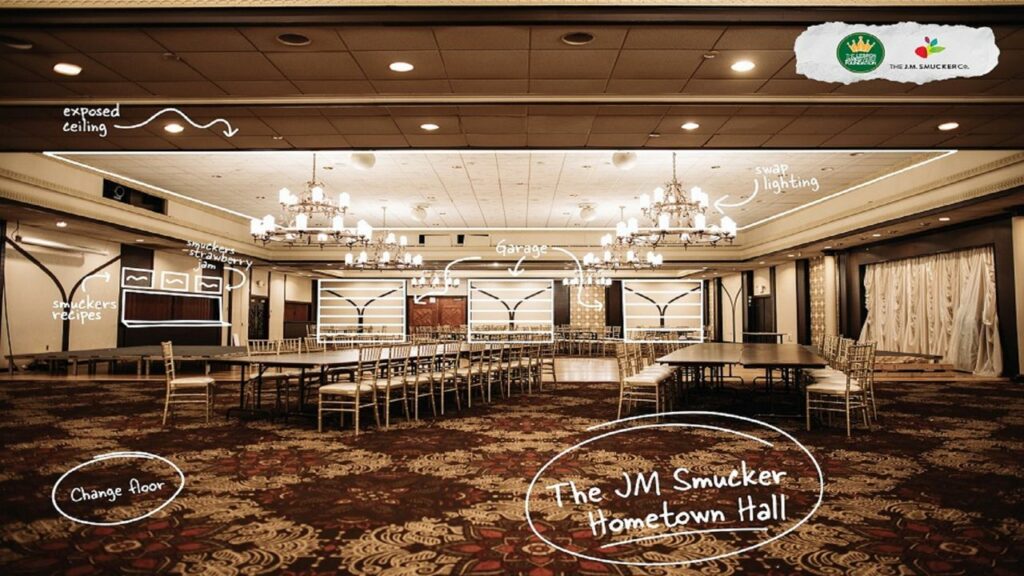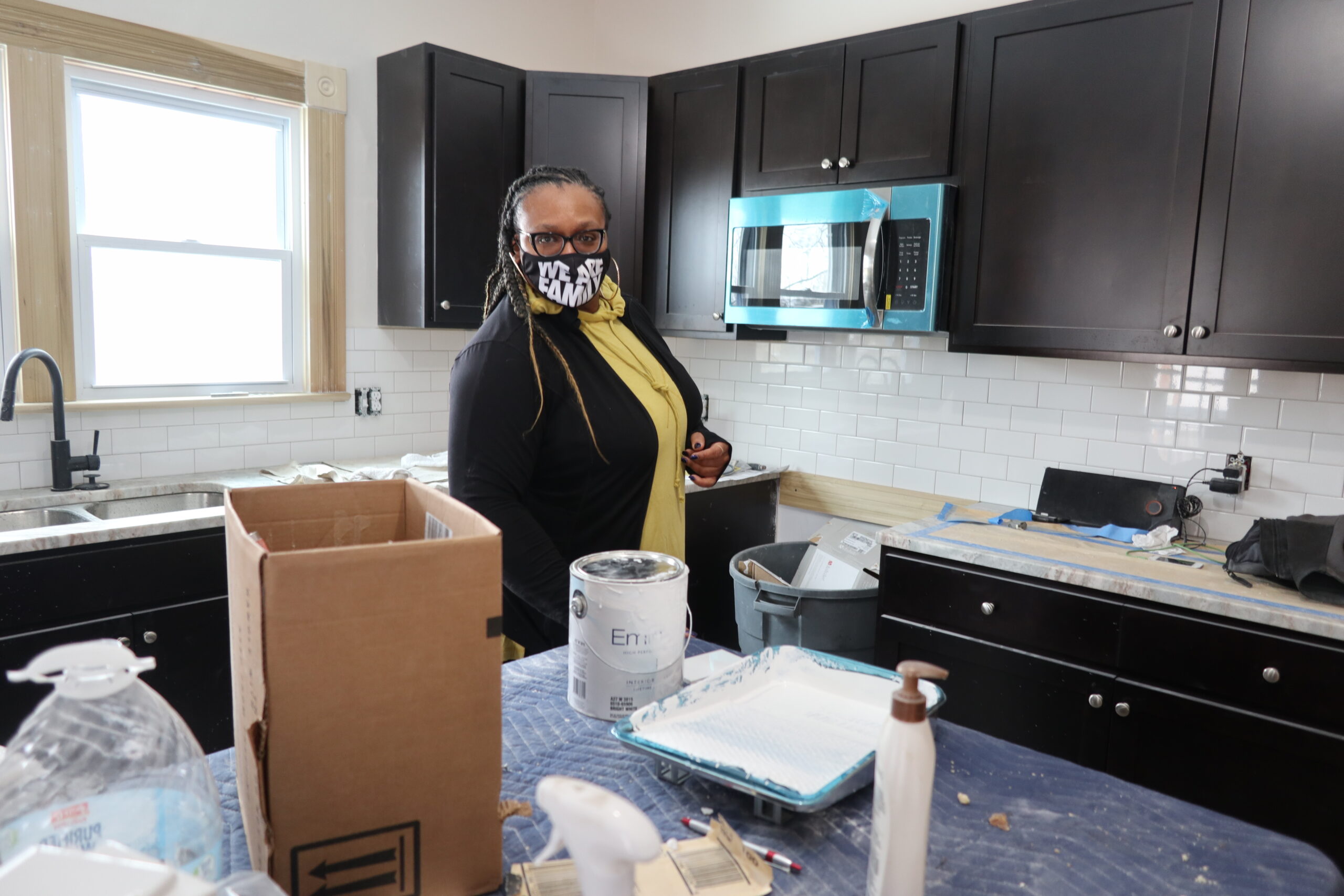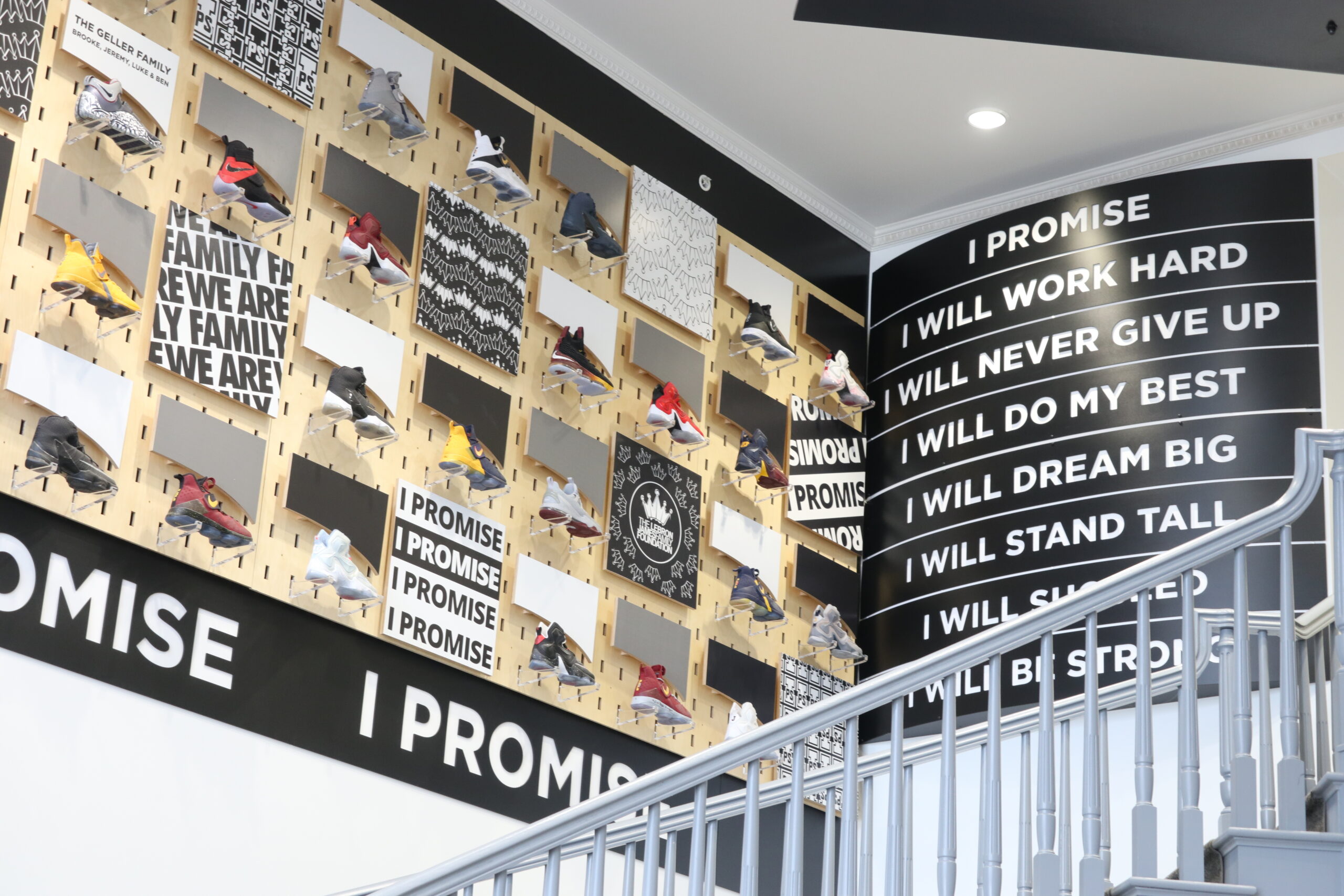
AKRON, Ohio – In 2014, when he strode into the University of Akron’s InfoCision stadium accompanied by the cheers of 30,000 people, LeBron James had more on his mind than returning to his hometown to play basketball again in neighboring Cleveland. That August evening Mr. James really wanted to talk about his new mission in Akron. The LeBron James Family Foundation, he said, would focus on strengthening the academic performance of Akron’s underprivileged public school students.
“Tonight isn’t about LeBron James,†he said. “It’s about these kids. When we start to put these kids’ dreams in front of what we want to accomplish as adults we will go greater and further than we’ve ever been before.â€
Precisely what Mr. James meant by “these kids’ dreams†has evolved in the years since. It’s now gaining much clearer outlines in five real estate ventures, encompassing over $20 million in investment by the foundation and its partners in Akron’s West Market Street neighborhood. Among the descriptions that he has amassed during an 18-year NBA career –champion, producer, actor, activist, philanthropist, businessman – Mr. James is adding one more. Socially responsible developer.
Every project – a new school, residential buildings, and a sports and entertainment complex – fit into the “I Promise†work ethic and “wrap around†social assistance that Mr. James has branded and is establishing in the neighborhood where he was raised. The value proposition is to build projects that help curb family disorder and instill learning, life, and work skills so that underperforming children graduate from high school, attend college, and succeed.
The source of the idea, Mr. James says, is the uncertainty and disruption that he experienced. Mr. James missed 83 days of school in the fourth grade. That challenge and others he faced as an underprivileged child inform and guide the foundation’s development decisions.

“When we started this work in education with my foundation, we never dreamed we’d be owning buildings and developing new properties,†said Mr. James in an email message. “As we dug deeper into the work, we learned what it takes to create real, visible change. And that’s listening to what our community needs and then rolling up our sleeves and getting to work.â€
The foundation’s latest and largest project is the $2.875 million it paid in December to buy the Tangier, an entertainment and events center that for generations was one of Akron’s favorite places to gather for weddings and to hear top artists like Frankie Valli. Renovation of the 60,000 square-foot building, renamed House Three Thirty, started in January and is expected to be completed next year. The renovation cost, said Michele Campbell, the foundation’s director, is not known yet because they expect so much of the furnishings and labor to be donated.
The project will provide training and jobs for students interested in careers in food service, hospitality, management, maintenance, finance, and other professions. It is also the first to develop a revenue stream for the foundation’s work, and is attracting prominent partners.
JPMorgan Chase is opening an office in House Three Thirty to provide families with financial advice and resources. The J.M. Smucker Company and Old El Paso, a General Mills brand of Tex-Mex foods, each donated $1 million for restaurants. Dick’s Sporting Goods Foundation committed $1 million more to build a sports complex on the top level of the 500-space parking deck alongside the project. Plans also call for stores, a coffee bar, a lounge, an ice cream parlor, a cabaret, and a LeBron James museum.
Mr. James’ model of development, say real estate authorities, is certainly distinctive and may be unique. It relies on his stature to recruit public and private capital to build neighborhood projects devoted to specific social goals. The individual pieces, though, are owned and managed by different agencies. “It’s a promising model for community redevelopment at a holistic level,†said Jeff Levine, a lecturer of Economic Development and Planning at the Massachusetts Institute of Technology. “It delivers high value development in places where there aren’t resources for people to do it themselves.â€
In building projects that serve the public interest, Mr. James joins an expanding movement of developers around the country who mix new ingredients into the formula for socially responsible development. Initially the term was defined by advances in design like energy efficiency, environmental safety, or affordability. Developers now construct buildings and neighborhoods that make those assets and others – healthcare, recreation, good schools, safe streets – accessible to residents in neglected communities who never could afford them.
Examples are becoming more numerous. Among them is the East Harlem Center For Living and Learning, a 143,000-square-foot mixed use project on 104th Street in Manhattan, N.Y. The $84 million building, completed in 2015, includes 89 affordable housing units, office space, and the DREAM Charter School for 500 students from kindergarten through the eighth grade. The project also includes a renovated public park.
“Housing is the platform that connects all these things together,†said Jonathan F.P. Rose, president of Jonathan Rose Companies, the center’s New York-based developer. “LeBron James is part of a movement of community revitalization. He’ll find the more he does, the more these pieces connect and make a difference.â€
Mr. James’ development career began five years ago when he recruited support from Akron Public Schools to start the I Promise School for underperforming elementary and middle school students. His foundation spent over $2 million to renovate a former McDonald’s office building for the school. It opened in 2018, serves students from third to eighth grade, and will reach its 720 student capacity in 2023. One of its design features is space on the ground floor for a Family Resource Center funded by the foundation and staffed by Victoria McGee, a social service professional who assists I Promise families with housing, medical care, legal advice, employment, and other needs.
The school inspired Cheryl L. Stephens, chief executive of the East Akron Neighborhood Development Corporation, to get involved with the city and the foundation to build I Promise Housing. It is a $14.5 million, 50-unit affordable housing project that starts construction in the spring on 1.75-acres the city owned and donated, a short walk from the school.
“LeBron James opened the school in 2018 and gave a speech,†said Ms. Stephens. “I saw it on YouTube. In one section he talks about not having a decent place to sleep. He talks about inspiring people to do more. I thought we should do more. We should do affordable housing. Children in the I Promise School would get preference.â€
I Promise Housing is close to I Promise Village, a 22-unit residential apartment building that provides temporary housing at no cost to families in crisis. It opened last July and includes space for social services and community events. Graduate Hotels, a Nashville-based developer, spent $850,000 in 2019 to purchase the 98-year-old, four-story brick building. Ben Weprin, the company’s chief executive, then went to work with his staff to recruit suppliers and contractors to donate materials and labor to complete a total renovation and furnish the apartments.

and renovated by the LeBron James Family Foundation. (Photo/Keith Schneider)
The parent company of Graduate Hotels, AJ Capital Partners, donated the finished project to the foundation. After it opened, the foundation, which has nearly $5 million in assets, spent $52,500 to buy a house across the street. It is being renovated for use by Shannon Shippe, the foundation staff member who manages the housing and services program.
“It’s a monumental project for us,†said Mr. Weprin, chief executive of Graduate Hotels. “The impact LeBron is having in Akron. His full-circle approach gives children such a better chance to succeed. It’s amazing. He’s doing this while he’s winning championships.â€
The benefits of I Promise buildings to the West Market Street neighborhood also fit the urban recovery occurring throughout Akron. Once a dispirited Rust Belt city that lost most of its rubber and tire manufacturing plants, Akron’s population stabilized at 200,000 residents and now looks and feels like a contemporary Midwest city on the move. Akron features a leading center of scientific research, the 25,000-student University of Akron, and a renovated downtown.
Since 2015 nearly 900 residential units have been built in center city Akron, many of them from renovated early 20th century office towers. The city spent $2 million since 2017 on grants to help businesses update their storefronts, and has invested $65 million to reconstruct its central business district.
“LeBron James is how the world sees Akron now,†said Daniel Horrigan, the city’s two-term mayor. “He’s changing the lives of a significant number of kids in his hometown. He’s changing the whole footprint of what West Market Street looks like. You can’t say enough good things about what he’s up to here.â€
Recognizing that his approach might have merit in other cities, Mr. James and the foundation staff convened a three-day “huddle†in Akron last October to describe the I Promise model to attendees. About 200 educators, philanthropists, activists, city leaders and development professionals showed up.
“This work requires a long-term investment, a lot of heart, and a lot of hard work,†said Mr. James. “There are people across the country who are willing and want to be a part of that in their own community.”
A version of this article was published by The New York Times on March 9, 2021.
— Keith Schneider

Lebron James Responded by Email to Three Questions For This Article
1. LeBron often talks about how he approaches games. He says he “reads and reacts and goes from there.†Is this the same approach he deploys as a developer? If so, how? If not why not?
For me, in everything I do in life – whether that’s preparing for a game, making a business decision, or impacting my community – it’s all about the process. For my Foundation, the most important piece of that process is listening. We listen to what our families need, what would make their load a little lighter, what would help them get to where they want to be, and we go from there. The projects we’re involved in are a direct response to their feedback to those questions. In that process, we identify the need, then we bring the right people to the table that can help us address that need. We aren’t experts in real estate. But we know what our families need and we’re committed to doing everything we can to help them achieve their goals and create a better future for their families. That vision has led us to our work that is redefining what a community looks like so everyone in this community can live out their dreams. And that starts with our kids and making sure they’re getting a great education and the social emotional supports they need, and it funnels out to their entire families as well.
2. LeBron also talks about “being able to break barriers and challenge yourself.†Does this apply to his development strategy in Akron?
When we started this work in education with my Foundation, we never dreamed we’d be owning buildings and developing new properties. But as we’ve dug deeper into the work, we’ve learned what it takes to create real, visible change. And that’s listening to what our community needs and then rolling up our sleeves and getting to work. That’s led us to opening a new public school, providing transitional housing, long-term affordable housing, and now a new community space in House Three Thirty. We never set out with a development strategy, we just always had a vision of uplifting and empowering the next generation of kids and families so they can achieve their dreams. The results of that so far have been even bigger than I ever imagined, and we’re nowhere near done yet.
3. Does LeBron anticipate expanding the I Promise model and development strategy to other cities. If so, how? If not, why not?
We hope what we’re building in Akron can be a blueprint for other communities to show how you can change and shape a community. This work requires a long term investment, a lot of heart, and a lot of hard work. And we believe there are people in every community across the country who are willing and wanting to be a part of that in their own community. Sometimes the hardest part is just figuring out where to start. We’ve made it part of our mission to share what we’ve learned, what’s worked and what hasn’t worked, and where we’ve seen success so that others can build off of what we’re doing. But our work in Akron will never be done. That’s a commitment for a lifetime.
